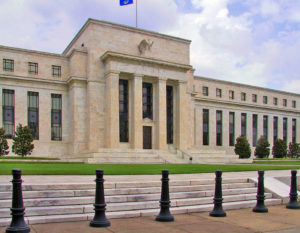
Federal Reserve Building in Washington, D.C. – Image Credit: Dan Smith (CC by 2.5)
Quantitative easing, also known as large-scale asset purchases is an economic policy in which a central bank buys a predetermined amount of government securities and other financial assets from the market with the goal of lowering interest rates and increasing the money supply. The driving idea behind the policy is to flood private banks with money, which should in turn expand private lending and promoting liquidity. Quantitative easing is considered an unconventional strategy and is only resorted to when interest rates are approaching zero and more traditional monetary policies have failed.
Until recently, quantitative easing was relatively rare. In response to the 2008 financial crisis, the Federal Reserve implemented multiple rounds of quantitative easing. It has since been used by both the Bank of Japan and the European Central Bank.
Quantitative easing is controversial due to its potential drawbacks. If the money supply increases too quickly, unwanted inflation can occur. It can also create a depreciation of the home country’s currency, which can be a negative depending on the current balance of international trade. Moreover, quantitative easing only works if the banks use the additional money to lend out to individuals and businesses, which is not always a guarantee.

Recent Comments